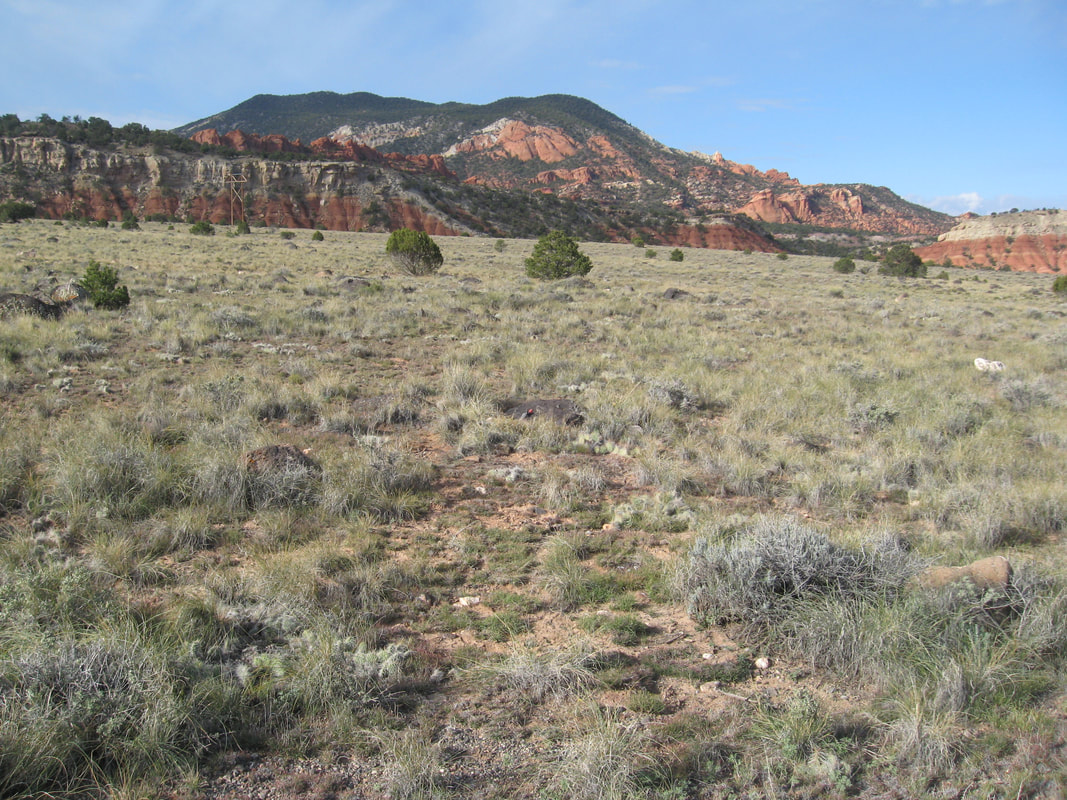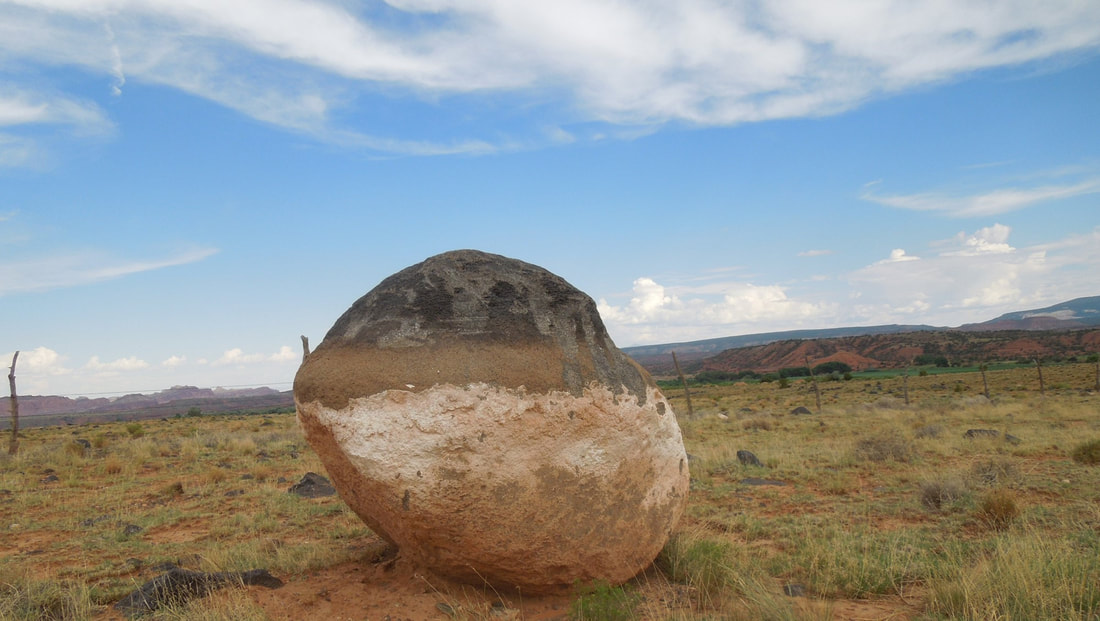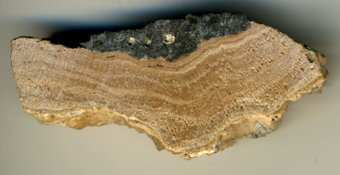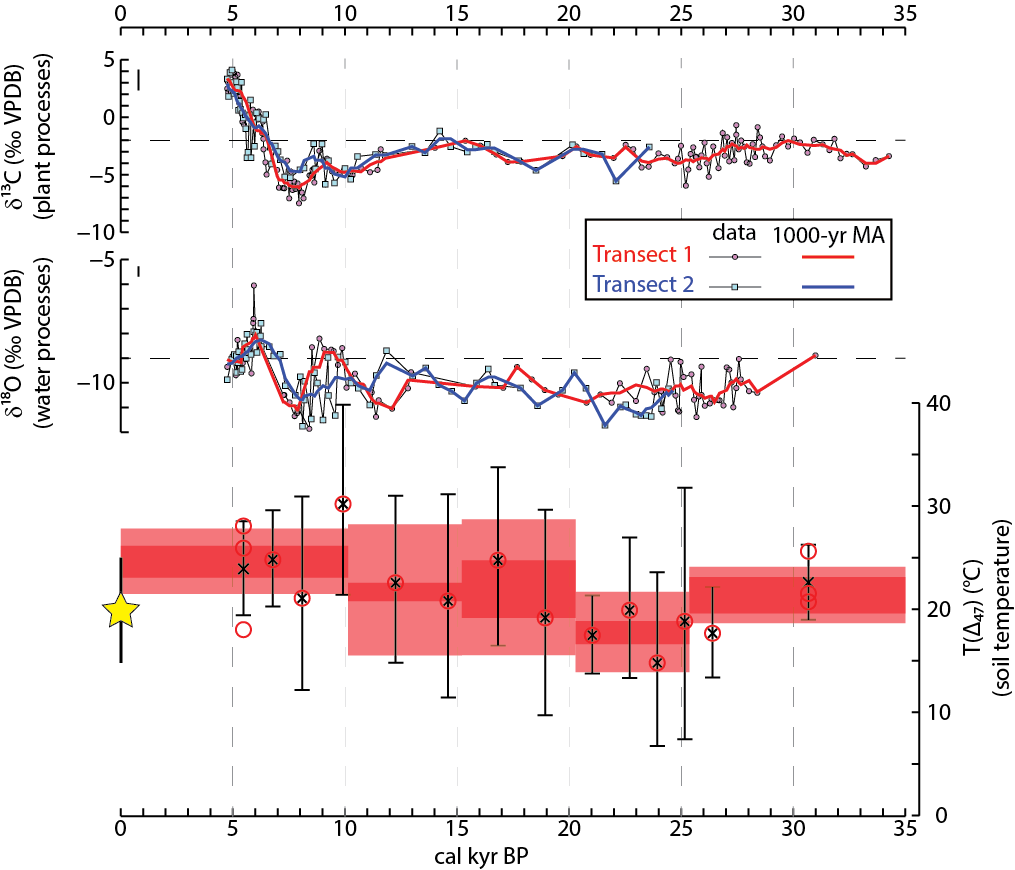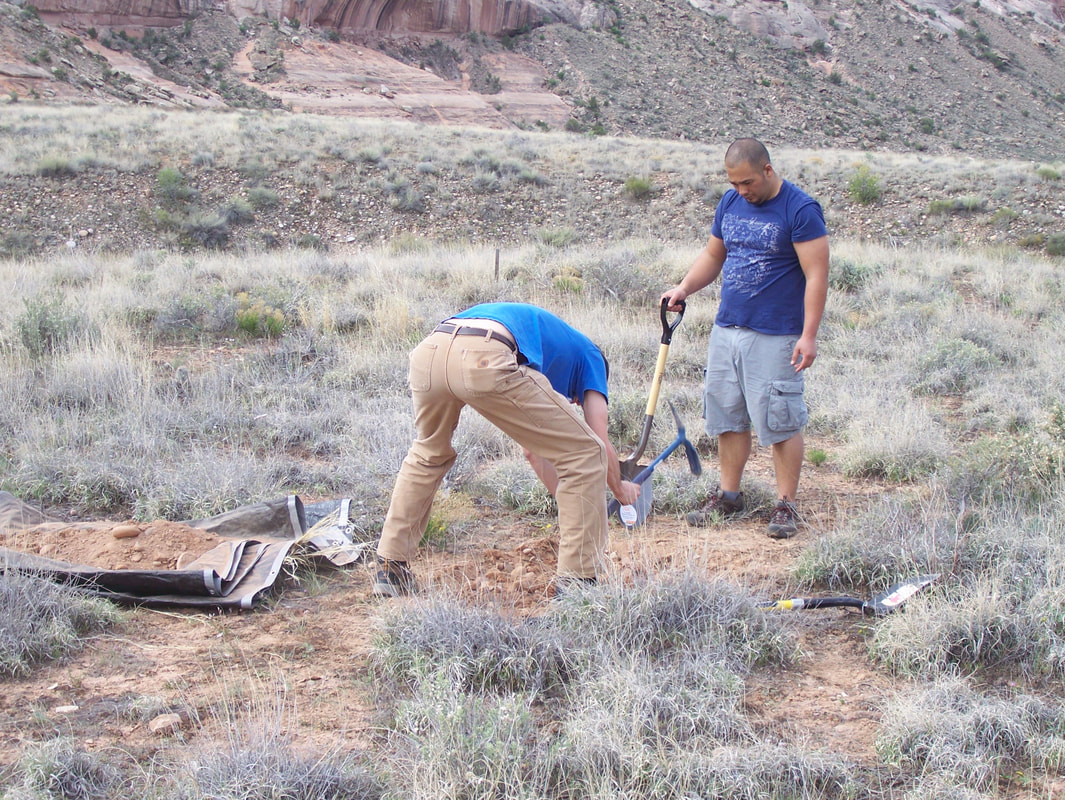|
Soil carbonate is calcite (CaCO3) that accumulates in a soil profile. It is one of the most widely used terrestrial paleoclimate archives because is common and records information about the critical zone that is otherwise difficult to obtain. Its carbon isotope composition (δ13C) is related to the type of biomass present (i.e., whether the plants are using C3, C4 or CAM photosynthetic pathways) and biological activity. Its oxygen isotope composition (δ18O) is in turn related to the original precipitation δ18O, modulating soil processes (e.g., differential infiltration, mixing, evaporation), and the temperature of mineralization. While most studies have investigated soil carbonate “nodules” for reconstructing paleoclimate, it also forms as laminated rinds on the bottoms of clasts. Laminated rinds therefore have the potential for making high-resolution records of ancient critical zones. To that end, my colleagues and I have explored how to establish a chronology, identify the conditions of mineral formation, and precisely analyze the laminations to make and interpret a paleoclimate record. |
|
Our field site was in southern Utah near Capitol Reef National Park. The black boulders you see all around this area are the result of enormous debris flows and can be the size of minivans! The boulder in the picture to the left is about a meter tall and was dug out of the ground to make the nearby highway. You can see how the boulder was originally oriented in the ground by color. The natural color of the boulder is black, the brown staining is due to the color of the soil, and the white mineral encrusted on the boulder is the soil carbonate we sampled. These are particularly large rinds – they are about 2 cm thick and the size of a large dinner plate when you break them off. |
|
One of the great things about soil carbonate rinds is that they contain multiple, largely independent pieces of information in a single record. The plot to the right shows our stable isotope results for the last ~35 ka (after Huth et al., 2020; Fig. 5). “Clumped” isotope data used to reconstruct temperature, or T(Δ47), shows cooler soil temperatures during the Last Glacial Maximum (~20-25 ka) and warmer temperatures during the Holocene (<12 ka). Modern June-September soil temperature is the yellow start (black line shows min and max temperatures as well). The pattern and magnitude of change is consistent with other paleoclimate inferences from the region. Our δ18O data is in the middle. It is more complex to interpret, with more winter infiltration, less soil evaporation, a lower δ18O moisture source, and cooler rainfall temperature towards the bottom. Importantly, however, the data pattern mimics changes in regional lake level and speleothem δ18O. It is encouraging that our laminated rind data records a soil-based signal that is coherent with other records types. Our δ13C data is on the top. While there is little variability during the last glacial period, during the Holocene there were enormous changes. The increase in δ13C is consistent with going from an ecosystem dominated by C3 plants to one that only has C4 plant. This is a big change to have in the relatively “stable” Holocene! |
|
The takeaway here is that laminate soil carbonate rinds have promise as a sub-millennially resolved paleoclimate archive like speleothem and lake cores. They allow us to investigate a portion of the critical zone that no other archive can similarly resolve and combining datasets (e.g., from packrat middens or speleothems) will provide increasingly detailed paleoclimate inferences. With the additional perspective provided by high-precision isotope analyses (Δ47 and Δ′17O), it may be possible to routinely identify the mineralization conditions of soil carbonate, providing a strong basis for quantitative modeling of C3-C4 plant abundance and soil water dynamics. |
